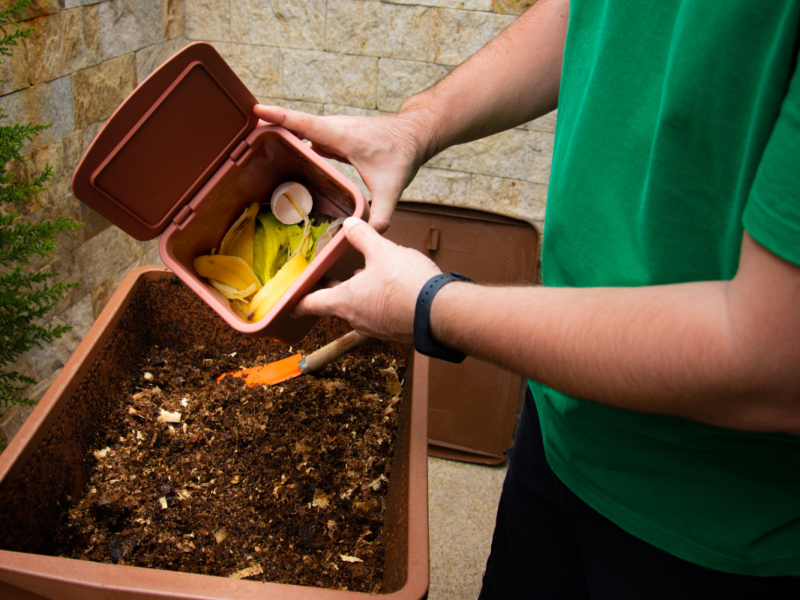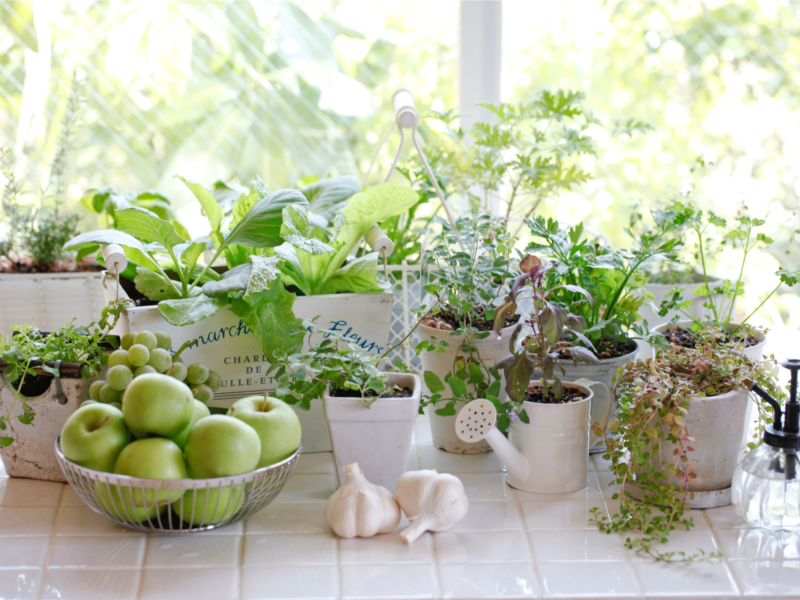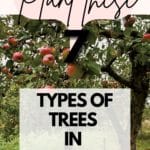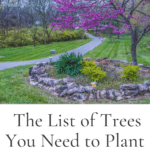Create a beautiful landscape and plant these six trees to support wildlife, contribute to the environment, and build a permanent food-producing sanctuary in your yard this year.
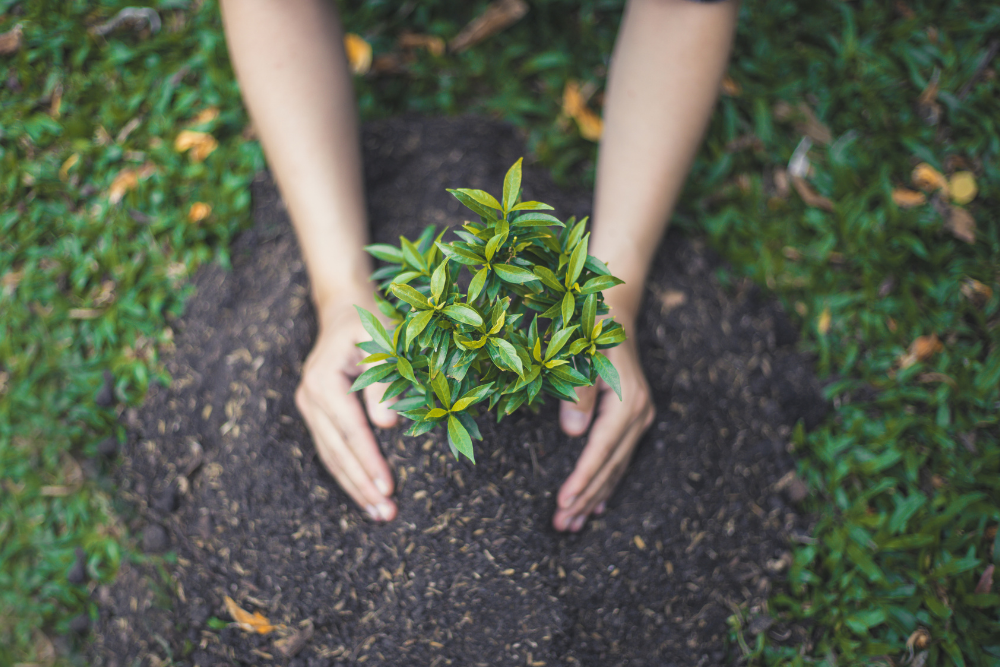
This post may contain affiliate links, which means I can receive a commission from any purchase made from the links. I earn from purchases from Amazon links. See the disclosure policy here.
Permaculture teaches us that plants and trees can grow just about anywhere and in any climate—and once they’re there, they can take care of themselves, requiring little to no maintenance. With the suitable trees planted in your yard, you’ll never have to go outside and water them—they’ll be able to rain-water themselves or pull up moisture from the ground instead.
So, if you want to spend less time watering and more time enjoying your outdoors, keep reading to find out which trees you need to plant in your yard this year!
This post is all about the six types of trees that you should plant in your yard this year.
As the weather warms up and spring sets in, now’s the perfect time to plant fruit trees in your yard or garden! Whether you grow them from seed or purchase them as saplings, these ten fruit trees will provide delicious and natural summertime treats like apples, cherries, and lemons. If you want to add these trees to your yard or garden but don’t know where to start, here are the six types of trees that we recommend to help you get started on this fun and rewarding project!
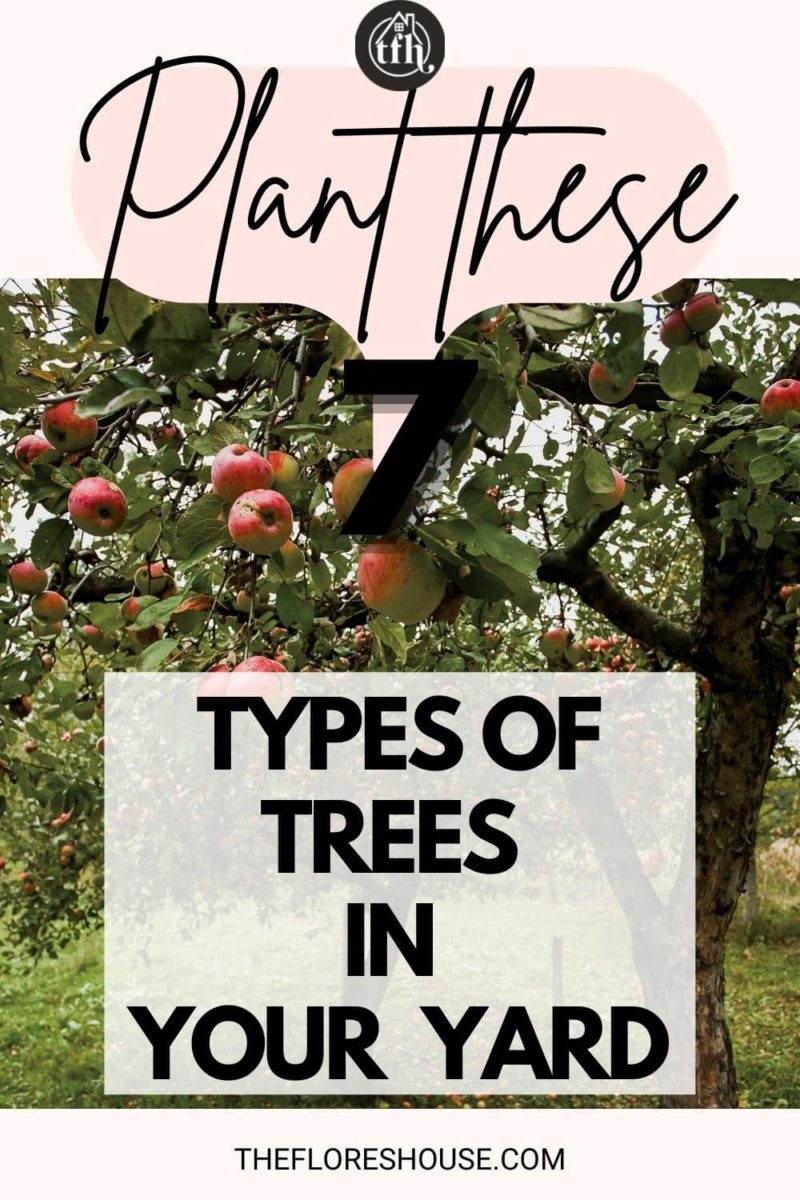
Why You Should Plant Trees in Your Yard
Trees powerfully impact everything from air quality to rainwater management and are essential to any permaculture system. In short, they make for a healthier environment.
They provide a space for recreation and entertainment, including swings, tree houses, and trampolines. They also increase property value by creating unique curb appeal.
More importantly, keeping a few trees around can benefit your health and well-being if you’re interested in sustainable living. Fruit-bearing trees are perfect because they require minimal effort.
There are many reasons to get some fruit trees planted in your yard. Not only do they offer excellent shade, but some of them also produce delicious fruits!
For example, apple and pear trees will give off fruit as a sustainable food source for many years. Peach trees produce enormous amounts of delicious peaches.
Plum and cherry trees are rich in polyphenols and can be preserved in many ways for year-round use.
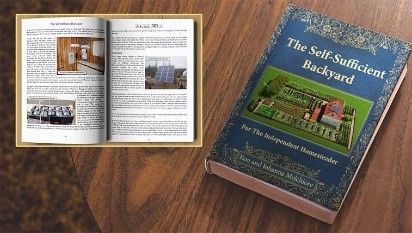
The Permaculture Approach to Planting Trees
Permaculture is a branch of ecological design and engineering that seeks to create self-sustaining human environments. It is a farming method that works in sync with nature.
With permaculture design in mind, trees are best known for their fruit. Similarly, they add nutrients to the soil, mitigate climate change, reduce air pollution, and work well as windbreaks and barriers.
Gardeners who embrace permaculture focus on perennials—trees and shrubs. Fruit-bearing plants are some of the best choices for your backyard orchard. Hence, they provide a sustainable food source while improving soil quality and supporting local wildlife (especially pollinators).
From apples and pears to peaches and plums, many options are easy on space but big on productivity!
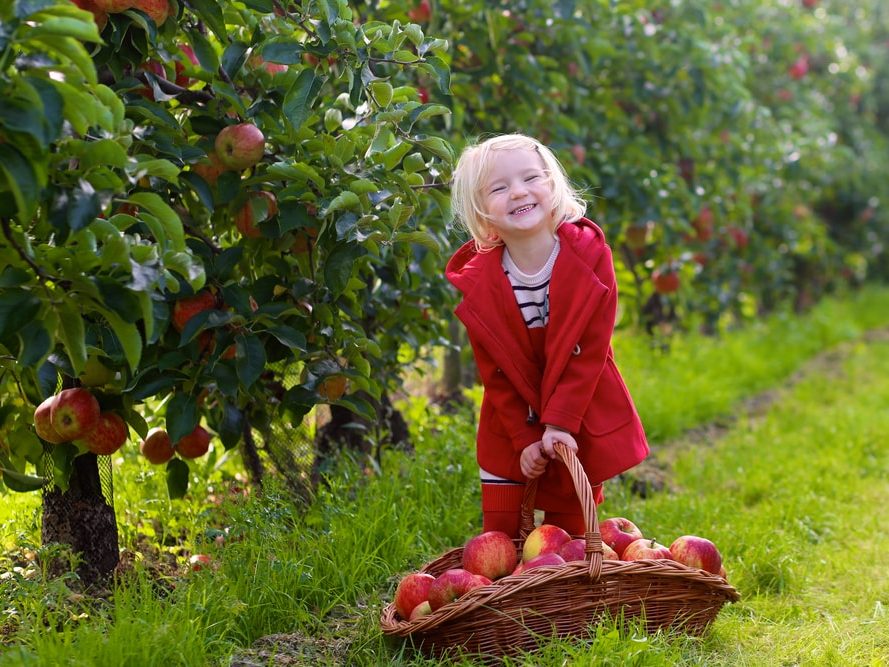
Which Trees Should You Plant in Your Landscape?
There are many trees for your landscape, each bringing a different look and utility. When planning which will be best for your space, consider what you want from them and how much time, money, and care they’ll require.
Types of Trees to Consider for Your Yard
- Native Trees
- Nut Trees
- Fruit Trees
- Shade Trees
- Ornamental Trees
- Privacy Trees
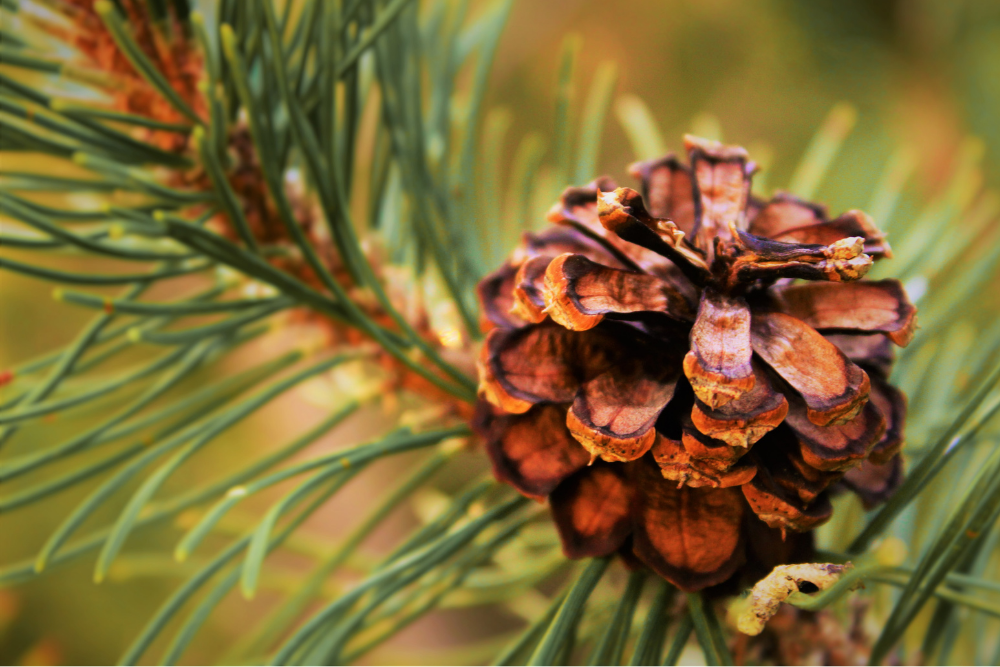
1. Plant Native Trees
It is best to start with trees that are indigenous to your area. They are adapted to the climate and will thrive. That means more pest resistance and less work for you to do.
Before buying or planting any trees, make sure it is not invasive.
By planting trees native to your region, you promote health within the surrounding ecosystem. These trees provide homes and food for wildlife of all kinds. Of course, without native trees, bird and butterfly populations would disappear. Try this guide to find the perfect trees native to your area.
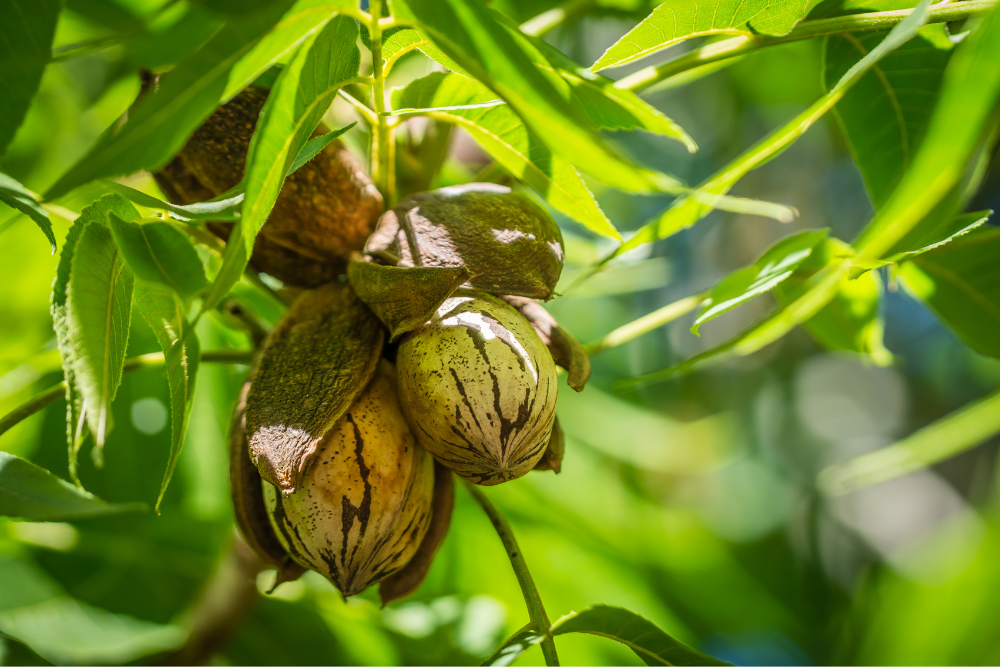
2. Plant Nut Trees
So long as you have the space, you can’t go wrong planting a few nut trees! We live in the southern United States, so the most popular nut trees are pecans and black walnut.
Did you know pecan trees are the only native nut trees in the USA?
The pecan trees we have on our property bring us so much joy. They taste amazing, and we save so much money. Also, I know that no pesticides have been sprayed on those trees! Read more about planting food that grows on trees.
Nuts have endless benefits. They can be used to make all kinds of foods and nut milk. They provide many healthy fats, vitamins, minerals, fiber, and protein. Not to mention, they store well.
Wonderful Edible Nut Trees
- Pecan
- Almond
- Walnut
- Hickory
- Hazelnut
- Chestnut
- Beech
- Sweet Acorn
If you’re looking for a permaculture project, consider planting nut trees. Once established, tree crops like pecans and walnuts require minimal human intervention and can grow in various soil types.
They are also highly productive. In addition to these benefits, nut trees have an aesthetic appeal: most will bear beautiful fruit or gorgeous foliage, making them excellent landscape additions.
If a food crop is what you have in mind, choose a nut tree. Hazelnuts (Corylus), pecans (Carya illinoinensis), black walnuts (Juglans nigra), and hickories (Carya) produce nuts that offer substantial benefits.
Nut tree saplings are relatively easy to find at local nurseries and big box stores, but they can be planted with care since they can be susceptible to root rot if too much water settles around their roots.
Did you know? On average, a pecan will begin producing nuts around 3-4 years after it’s been planted. However, these trees can produce for a hundred or more years!
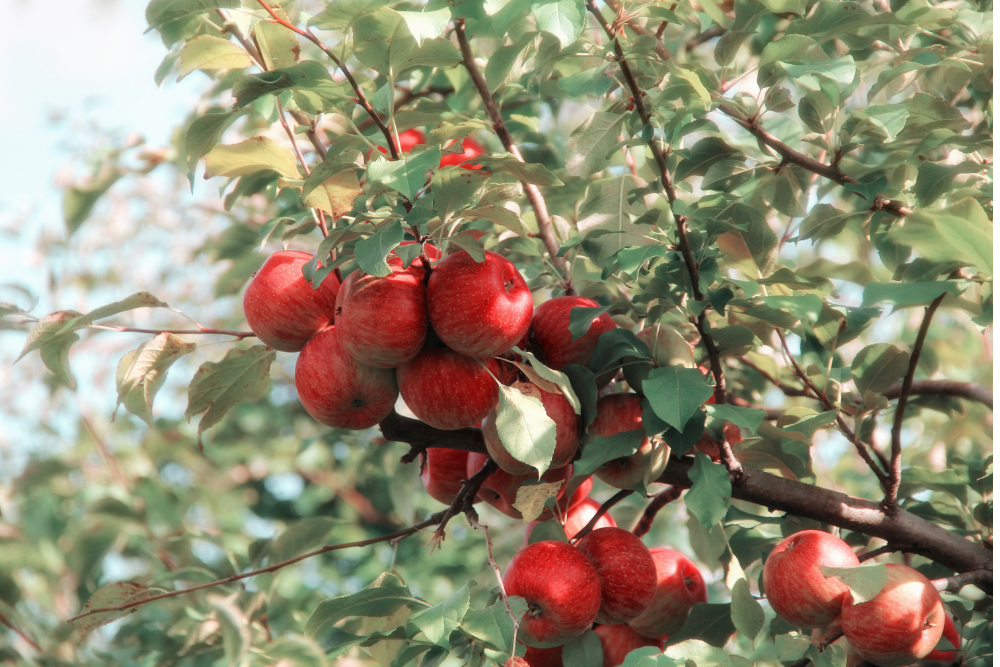
3. Plant Fruit Trees
Not all nut trees are grown for their nuts. Like mulberries and pawpaws, some are used more as shade and ornamental plants than for their fruit, but these species still provide year-round structure to an otherwise spotty yard.
Whether or not they bear fruit, many of these ten nut trees can be invasive, so keep that in mind before you plant them.
Fruit-bearing plants are an excellent investment for any property. Likewise, not only do they beautify your landscape and add value to your home, but they also help purify air and water, among other benefits.
When choosing which type of fruit tree(s) will be right for you, consider where on your property each one would best accommodate, how much sunlight it will receive (or how much shade), how much time and effort you’re willing to invest in its upkeep, etc.
If you are lucky enough to have a big backyard, consider planting a fruit tree. More importantly, it will be fun and educational for your kids. Not to mention, having fresh fruit on hand is convenient and healthy!
Otherwise, consider starting small with a dwarf citrus tree like a kumquat or lemon. They require less maintenance than other trees and provide tasty, bright-colored treats all year.
Types of Fruit Trees to Plant
Not all nut trees are grown for their nuts. Like mulberries and pawpaws, some are used more as shade and ornamental plants than for their fruit, but these species still provide year-round structure to an otherwise spotty yard.
Opt for dwarf, shallow-rooted varieties that can be grown in pots and smaller spaces.
- Apple
- Peach
- Jujube
- Medlar
- Cherry
- Plum
- Nectarine
- Pawpaw
- Persimmon
- Apricot
- Pluot
- Quince
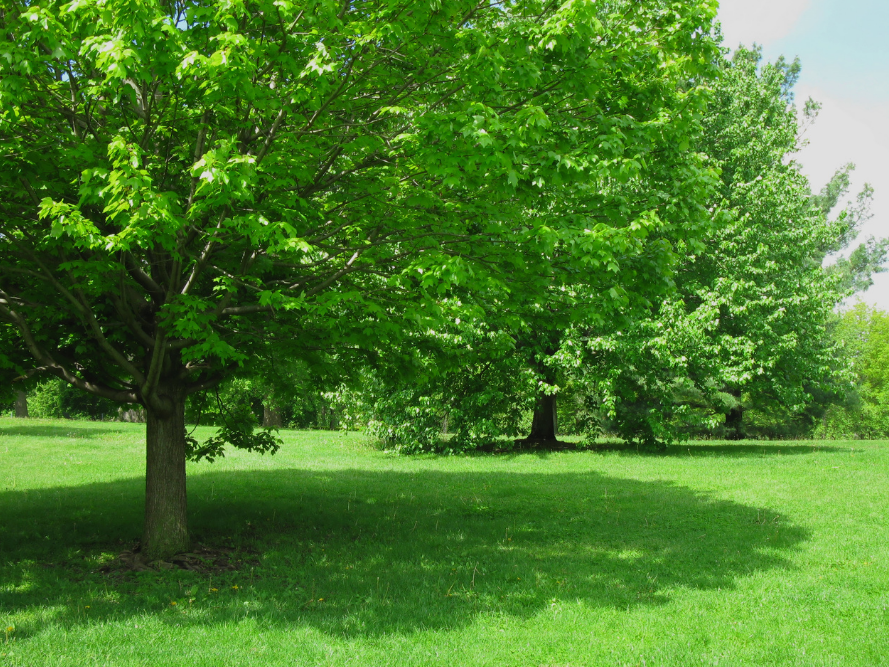
4. Plant Shade Trees
If you have a spot, consider planting a shade tree. There are so many options. Imagine your children or grandchildren climbing it one day!
Southern Shade Trees
- Live Oak
- Pin Oak
- White Oak
- Post Oak
- Magnolia
- Beech
- English Walnut
- Tulip Poplar
Northern Shade Trees
- Ash
- Beech
- Birch
- Sugar
- Oak
- Willows
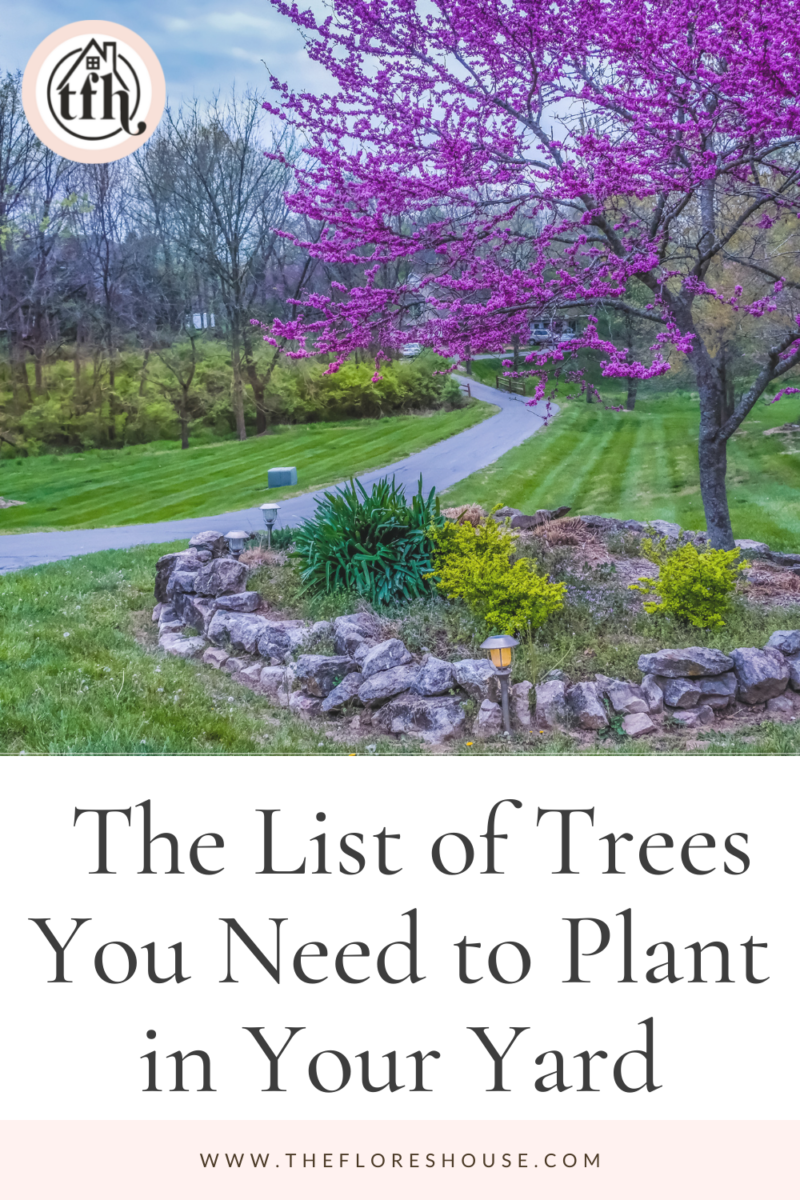
Midwestern Shade Trees
- White Oak
- Chestnut
- Sugar Maple
- American Hop-Hornbeam
Deciduous broadleaf trees make up much of our forests, and they tend to be shade-tolerant species.
Desert Shade Trees
- Oak
- Ash
- Honey Mesquite
- American Elm
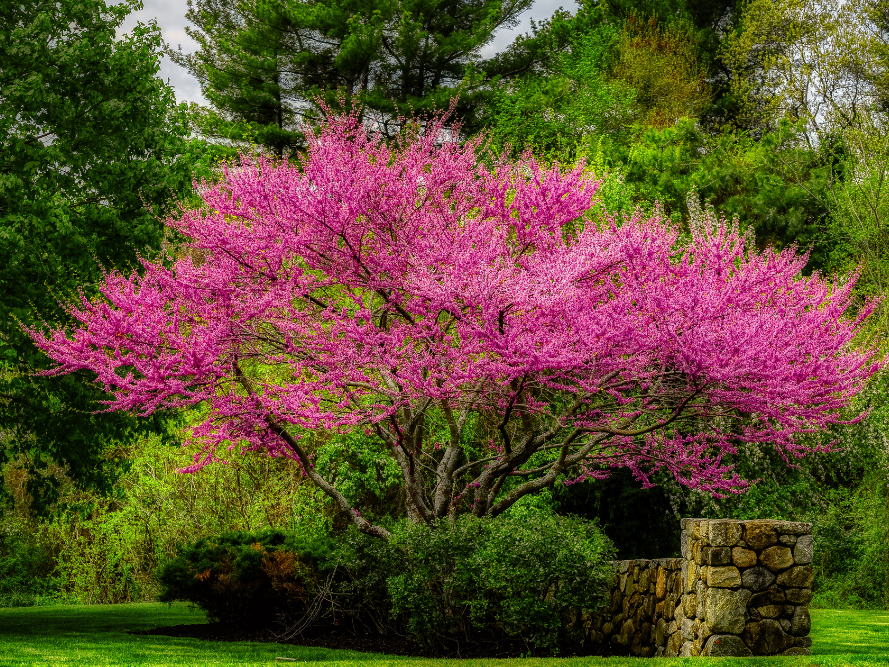
5. Plant Ornamental Trees
Ornamental trees offer various benefits, including adding structure and color and removing air pollutants. But we love them for their beauty!
Try adding two or three different trees to your landscape, each providing a pop of color and interest.
There are plenty of popular ornamental tree options; however, ten ornamental species will dazzle your landscape!
The Prettiest Trees for Your Yard
- Eastern Redbud
- Crepe Myrtle
- Lilac
- Dogwood
- Magnolia
- Hydrangea Tree
- Jacaranda
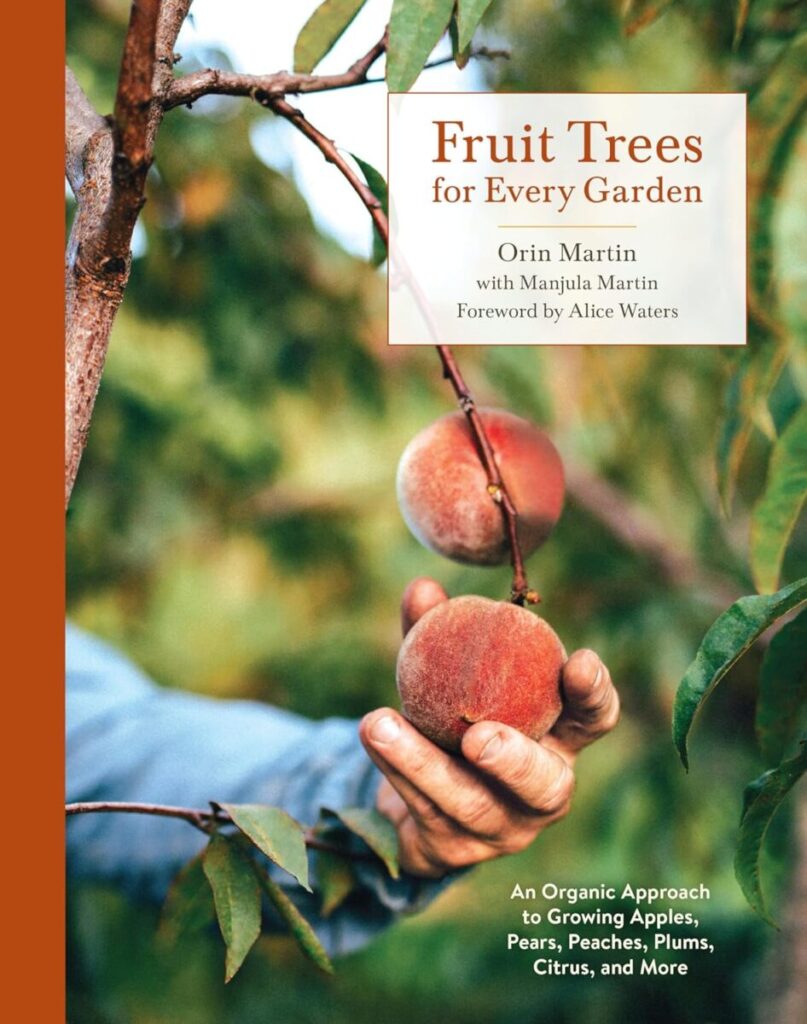
6. The Best Trees to Plant for Privacy
We love the look of a lovely, lush evergreen in the yard. Several varieties are available in all gardening zones.
From adding texture and interest to creating a wall of privacy or protection from the wind, an evergreen is a safe bet.
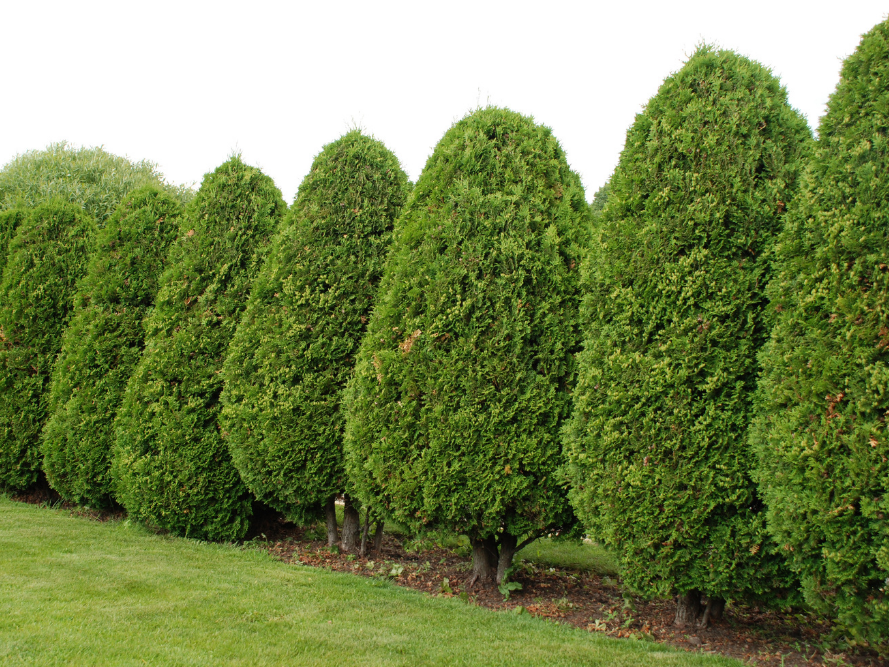
The Best Trees for Privacy
- Arborvitae (Thuja sp., Emerald Green)
- Cypress (Leyland, Arizona, Lawson)
- Juniper
- Spruce
- Hemlock
- Holly (American Holly produces a tall hedge)
- Pine
Plant a few of these around the front garden for interest and curb appeal—plant thuja with holly for a beautiful privacy fence.
Once established, evergreens are very low-maintenance. Planting new trees on your property will bring people joy for years.
Planting trees has so many benefits to the ecosystem, your health, and your property value. I recommend planting trees even if you don’t intend to live in your home forever because they add much curb appeal and value to the house.
So, go ahead -reduce your carbon footprint and plant trees!
Pro tip: Sterilize the tools before using them and between trees to prevent spreading diseases. I use a solution of 1:8 bleach to water.
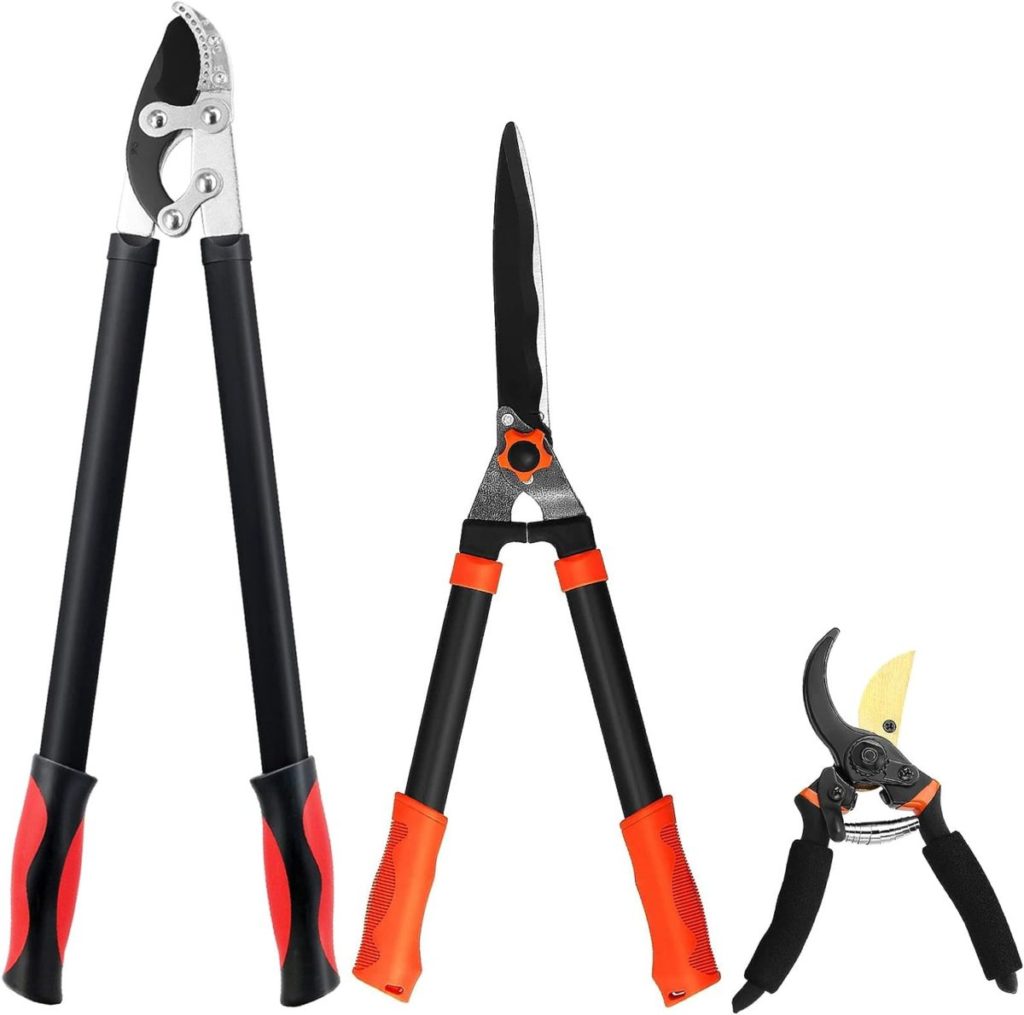
How to Plant Trees for Success
1: Choose the Right Tree
- Select a Species: Consider your climate, soil type, and the tree’s purpose (shade, fruit, ornamental, etc.).
- Buy a Tree: Purchase from a reputable nursery. Opt for a healthy tree with a straight trunk and vibrant foliage.
2: Select the Planting Site
- Location: Choose a spot away from buildings, underground utilities, and overhead lines. Ensure the tree has room to grow both upward and outward.
- Sunlight: Make sure the site receives adequate sunlight for the type of tree you’re planting.
3: Dig the Hole
- Size: The hole should be twice as wide as the root ball but no deeper. The tree should sit at the same depth it was in the container or at the nursery.
- Shape: The hole should have straight sides and a flat bottom to encourage root growth outward rather than in circles.
4: Prepare the Tree
- Container-Grown Trees: Gently remove the tree from the container. Loosen the roots gently with your hands.
- Balled and Burlapped Trees: Place the tree in the hole with the burlap and wire cage intact, but cut away any rope and remove or fold down the burlap from the top of the root ball.
- Bare-Root Trees: Soak the roots in water for a few hours before planting. Trim any damaged roots.
5: Plant the Tree
- Positioning: Place the tree in the center of the hole. Make sure it’s standing straight.
- Backfill: Partially fill the hole with native soil, water it to settle the soil, then continue backfilling. Avoid burying the tree deeper than its original depth.
- Water: Once the hole is filled, water the tree thoroughly to eliminate air pockets.
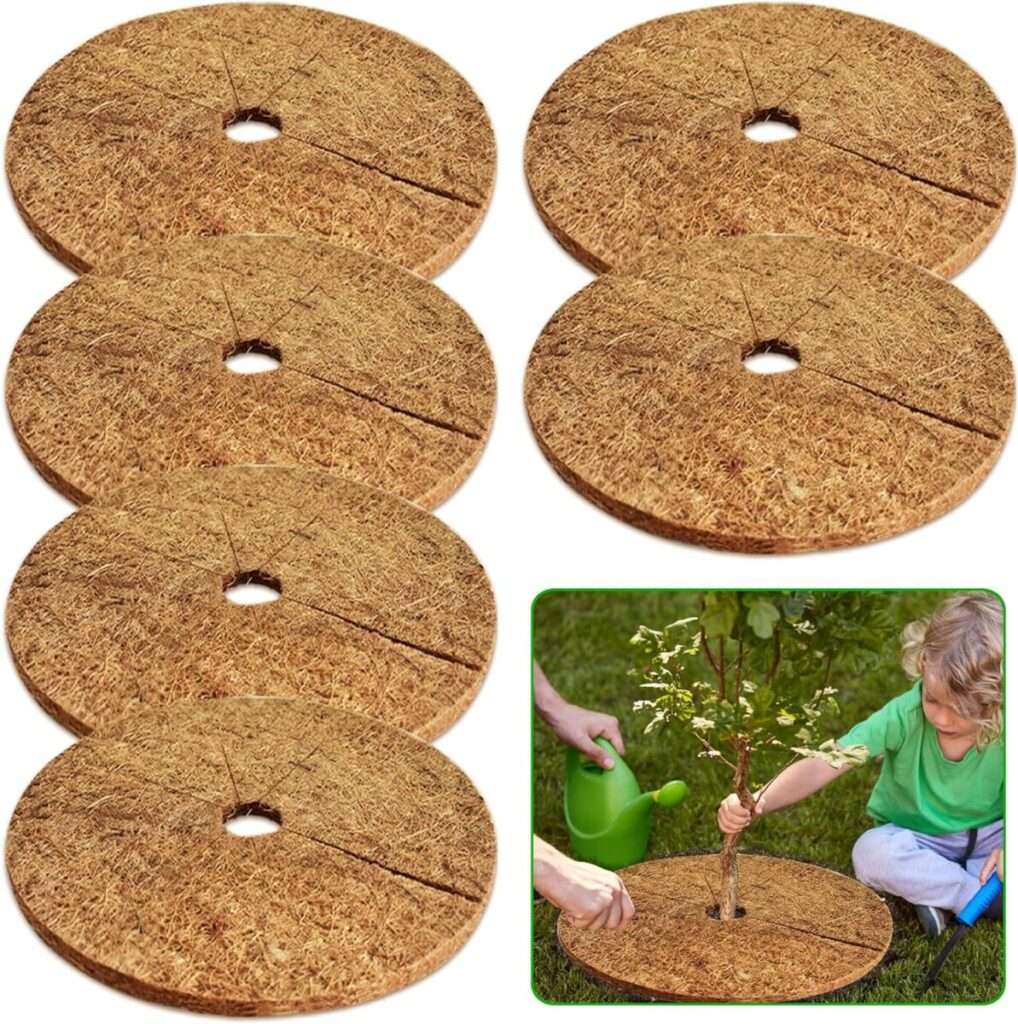
6: Mulch
- Apply Mulch: Spread a 2-3 inch layer of mulch, or use a tree ring mulch mat, around the base of the tree, keeping mulch a few inches away from the trunk. Mulch helps retain moisture, regulate soil temperature, and reduce weed competition.
7: Stake if Necessary
- Staking: Not all trees need staking. Stake your tree if it’s tall and unable to stand upright or if it’s in a windy location. Remove stakes after the first year.
8: Water and Care
- Watering: Keep the soil moist but not waterlogged. Deep, infrequent watering is preferable to frequent light watering.
- Monitoring: Check the tree regularly for signs of pests or disease. Adjust staking, mulching, and watering as needed.
9: Prune Properly
- Initial Pruning: Remove only damaged or dead branches in the first year.
- Subsequent Pruning: As the tree grows, prune to shape the tree and remove any competing leaders or branches that cross each other.
By following these steps, you give your tree a solid foundation for growth and health, contributing to your landscape’s beauty and the environment’s well-being for years to come.

